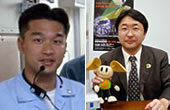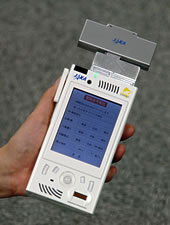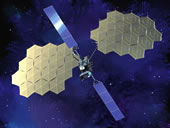
 JAXA provided a live report of the launch of the Engineering Test Satellite VIII "KIKU No. 8 (ETS-VIII)"/H-IIA F11) from a studio at Tanegashima with JAXA employees' comments.

The live report of the launch on the launch day.

 The Engineering Test Satellite VIII "KIKU No.8 (ETS-VIII)" will enable communications between two moving small terminals that are about the same size of a current mobile phone thanks to its onboard large deployable antennas which are among the largest in the world.
This function is expected to be very useful in our daily lives, for example in some mountainous areas and at sea where no ground stations are available, as well as for smooth operation of emergency vehicles and a quick rescue of disaster victims.

 One of the largest geostationary satellites in the world. One of the largest geostationary satellites in the world.
JAXA has been conducting the ETS series project with the aim of achieving satellite technology that can meet the needs of the future.
"KIKU No. 8," or the 8th ETS, will challenge technological standards in communications and positioning that can make our life more convenient and comfortable.

 Everybody still has a vivid memory of the huge earthquake that hit the Niigata-Chuetsu area in Japan. Although people's safety had to be confirmed and rescue operations had to be started as soon as possible, the exchange of information was hampered due to the breakdown of communication networks. When the images of the disaster-stricken area were finally transmitted to us on TV, I clearly remember that they made me feel strong regret. "If the KIKU No. 8 (ETS-VIII) had been developed earlier, rescue operations would have been smoother." It is my big challenge, or even my lifework, to provide an environment in which people can securely communicate with each other at all times in whatever situation.

The H-IIA Launch Vehicle No. 11, whose payload is the "KIKU No. 8 (ETS-VIII)" is the "H2A204" type. This was the first time for the "H2A204" type to be launched.

|